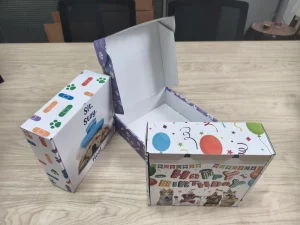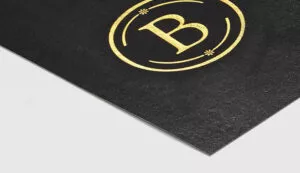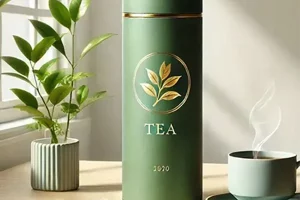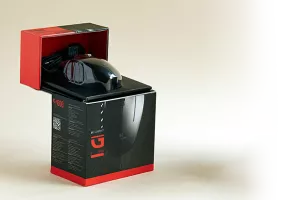I struggled to pick the right paper box for my new product. I felt uncertain and overwhelmed. I wanted a quick guide to end my confusion.
Paper boxes come in many forms. Each type suits different needs. Common types are rigid, corrugated, and folding boxes. They vary in strength, cost, and appearance. Choosing the right one depends on product weight, branding, and budget.

I want to share what I learned about these box types. I hope it helps you pick a suitable solution for your brand or business.
What is the difference between rigid and corrugated boxes?
I used to mix up rigid and corrugated boxes. I wanted a sleek look, but I also needed durability. That conflict led me to research them closely.
Rigid boxes have a solid chipboard core. Corrugated boxes have fluted paper between two layers. Rigid boxes are upscale and heavy-duty. Corrugated boxes are strong but more lightweight and economical.

I remember my first product launch. I had a high-end gift set and did not know if I should use a rigid box or a corrugated box. Rigid boxes looked elegant. They had that premium feel I wanted for my brand. They also kept their shape well and felt substantial when held. This was important for a luxury product. But the cost made me pause. Rigid boxes can be expensive because they often involve thick chipboard cores wrapped in specialty papers.
Corrugated boxes were another option. Corrugated boxes have a fluted layer between two liners. That design makes them strong and lightweight at the same time. I have seen them used for shipping electronics, household items, and even produce. Corrugated boxes are budget-friendly. They also have good crush resistance. This helps protect items during transit. The downside is that corrugated boxes can look more industrial or plain. Even with custom printing, corrugated boxes might not feel as refined as rigid boxes.
I concluded that rigid boxes are ideal for high-end products that aim for a premium unboxing experience. Corrugated boxes are better for shipping and for items that need reliable protection at a lower cost. Both box types have their place. It depends on how I want customers to feel when they open the box. It also depends on budget and storage needs.
What is a reverse tuck box?
I was intrigued by the term “reverse tuck box.” The name sounded confusing at first, so I had to see how it worked.
A reverse tuck box has flaps that tuck in opposite directions on the top and bottom. This design saves material. It also creates a neat closure.

When I first heard about a reverse tuck box, I imagined some complicated folding pattern. Then I looked at a sample. The top flap tucks from the rear to the front, while the bottom flap tucks from the front to the back. This mirrored fold is why it is called “reverse.” It is one of the most common folding carton styles in the packaging world. It is cost-effective and easy to assemble.
I used a reverse tuck box for a set of small stationery items. I discovered how convenient it was for high-volume production. Printers can die-cut and score these boxes to ship flat. This helps me save on shipping costs and storage space. I can then pop them up as needed. The flaps lock in place without extra tape or glue.
This type of box is popular for lightweight products like cosmetics, small electronics, and accessories. The design allows for quick manual or machine filling. The closure is secure enough for retail display. However, it might not be ideal for heavier items. The flaps could open if subjected to too much force. In those cases, I might add a bit of adhesive or choose a stronger style. Still, for many uses, the reverse tuck box is simple, effective, and affordable.
What is a knock-down box?
I once heard the term “knock-down box” and pictured a flat box that folds into shape. I was curious how it worked.
A knock-down box is shipped flat to save space. It is later assembled for use. This design helps reduce shipping and storage costs, making it a popular option in packaging.

A knock-down box, also known as a flat-packed box1, arrives in a flattened state. I find this very useful when space is limited. I can store many flat boxes in my warehouse without occupying too much room. Then, when I need them, I unfold and secure the sides. This process is usually quick, especially if the box has pre-creased lines and folding guides.
Knock-down boxes can be made of vlnitý materiál2 or paperboard. Corrugated knock-down boxes often have slots or tabs that fit together when assembled. Paperboard knock-down boxes might require a bit of tape or glue at the seams. Once built, they can hold products of various sizes. The strength depends on the thickness of the material.
I sometimes choose knock-down boxes for short-run promotions. For example, if I host a pop-up event and need to distribute products in custom boxes, I order a batch of flat-packed boxes. I can bring them to the event, build them as needed, and then store the leftovers easily afterward. This flexibility is valuable for brands that experience seasonal spikes in product demand.
Still, the biggest advantage is cost savings. Shipping flat boxes reduces freight expenses. Storing flat boxes also frees up space. The only downside is that I have to invest a bit of time folding and securing them before use. But for me, that trade-off is worth it, especially if I want to manage my packaging inventory efficiently.
What is a flip top box?
I love the convenience of flip top boxes. I remember using one for my subscription box service and seeing how customers reacted.
A flip top box3 has a lid attached at the back, which flips open from the top. This creates a handy one-piece design that is simple to open and close.

A flip top box is a style that combines practicality with presentation. The lid is hinged at the back panel. This means the entire top can lift open in one smooth motion. I find that customers appreciate the ease of opening and resealing. It feels more inviting than tearing open a standard box.
I used flip top boxes for a subscription service I launched. Each month, I sent curated items to subscribers. I wanted the box to feel like a small gift that opened effortlessly. I also used custom printing on the inside of the lid, so it served as a mini canvas for brand messages. That extra interior design gave a warm and personalized touch.
Flip top boxes can be made from rigid material or corrugated board, depending on the weight of the contents. If I’m shipping heavier items, I might choose a corrugated flip top design for added support. If I’m going for a premium feel, I choose a rigid flip top box with a magnetic closure. That detail elevates the unboxing experience. It also keeps the lid securely closed.
In my experience, the flip top style offers a balance between function and aesthetics. It is particularly great for gift sets, electronics, cosmetics, or any product that benefits from repeated openings. It makes each unboxing moment memorable.
What is a tuck top box?
A tuck top box sounded basic at first, but I realized it can be very versatile. I used it for some of my initial product launches.
A tuck top box features a top flap that tucks into the front panel. This design provides a secure closure. It is often used for bakery items, small gifts, or retail products.

A tuck top box, sometimes called a “tuck top auto-lock” box, is a simple yet clever design. The main feature is the top flap that tucks directly into the box front. This creates a clean look without needing separate tape or adhesive for closure. I found it convenient when packaging pastries. The box kept them safe while looking professional in a display case.
Tuck top boxes can come with different bottom styles. Some have an auto-lock bottom, which folds into place and locks securely. Others might need a bit of tape at the bottom for reinforcement. The top flap is usually the highlight, though. It is easy to open and close, so consumers can reuse the box if needed.
I used tuck top boxes in a small bakery project. I appreciated how they arrived flat. I could fold them quickly before filling them with baked goods. The top flap made it simple to seal the box without messing around with extra materials. I also liked printing a simple brand logo on the flap. That gave a consistent look when stacked on a display shelf.
Tuck top boxes can be cost-effective, especially when produced in bulk. The main limitation is that they might not be suitable for very heavy items, as the closure can pop open if not well reinforced. But for many lightweight or moderate-weight products, the tuck top design is reliable and neat.
What is a divider box?
I once needed to ship fragile items. A friend suggested a divider box. I had never used one before, so I explored its benefits.
A divider box includes internal partitions or inserts that separate items. These dividers prevent movement and protect each product from bumps during shipping or storage.

A divider box is great for organizing multiple items within the same container. The partitions can be made of cardboard or another sturdy material. They create compartments that keep items from hitting each other. This is especially helpful for glass products, bottles, or small individual components that can break or scratch during transit.
I used a divider box for a home fragrance line. I had to ship multiple glass reed diffusers to retailers. Without a divider, they would clink together and risk cracks. The insert system changed everything. Each diffuser bottle had its own cozy slot. This not only safeguarded them, but also made the unboxing experience neat and systematic.
Divider boxes can be customized. I can specify the number of sections, the spacing, and even the shape of the inserts. Sometimes, companies add foam or other protective padding to the dividers for extra cushioning. This design can also help with branding. Each compartment might hold a specific item in a curated set. That arrangement can look appealing when the box is opened.
The main downside is that divider boxes can be more expensive to produce because they involve additional material and more complex die-cutting. They also take a bit more time to assemble. However, for anyone who needs to ship or display multiple products in one box, the divider box is a worthy investment. It reduces breakage, organizes items, and looks impressive to the end user.
Conclusion
Paper boxes come in many designs, each serving different needs. Knowing these styles can help you pick the best option for your product and brand.
-
Discover the advantages of flat-packed boxes, including space-saving and cost efficiency, by checking this resource. ↩
-
Learn about the benefits of corrugated material in packaging, including durability and cost-effectiveness, by visiting this link. ↩
-
Explore the advantages of flip top boxes for packaging and how they enhance customer experience. ↩








